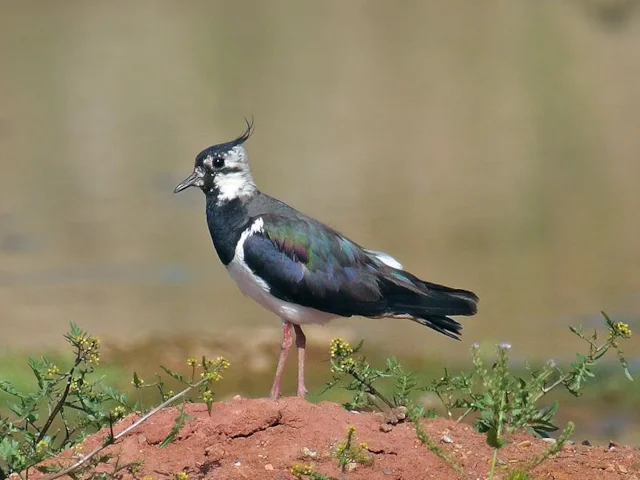Good news for Northern Lapwing in north Wales

The breeding population of Northern Lapwing is going from strength to strength on the RSPB’s Malltraeth Marsh reserve, Anglesey, the organisation has announced.
Numbers of the species have increased to an all-time high on the reserve, with 24 pairs successfully fledging 49 chicks in 2014, compared to eight pairs rearing no young in 2009. This is thanks in part to a grant from the Biodiversity Action Fund of WREN which started in July 2011.
Ian Hawkins, RSPB Cymru Malltraeth Marsh Reserve Manager, says: “We’ve done a lot of work over the past four years for this bird and these results demonstrate that we are doing the right habitat management and that it’s possible to bring back wildlife from the brink.”
Funding from WREN – a not-for-profit business that awards grants to projects from funds donated by FCC Environment through the Landfill Communities Fund (LCF) – has allowed RSPB Cymru to successfully create and restore wetlands habitats for the lapwings and other wildlife.
Much of the ground work has been done through the purchase of a Softrak all-terrain vehicle, which allowed the execution of essential work on the 273 ha of reedbeds, marshland, wet grassland and pools on the reserve that was not possible before.
Ian added: “Malltraeth Marsh is subject to occasional floods and, being low lying and relatively flat, it is slow to drain. The marshy ground is often too soft for ordinary farm tractors even in summer. The Softrak allows us to work in these areas whatever the weather – without getting machinery bogged down and without damaging the ground.”
The vehicle is also used to manage lapwing areas on the nearby Valley Wetlands RSPB and Morfa Dinlle RSPB. Between them, the three reserves supported a record 72 pairs of Northern Lapwings in 2014, which is estimated to be nearly 15 per cent of the population remaining in Wales.

